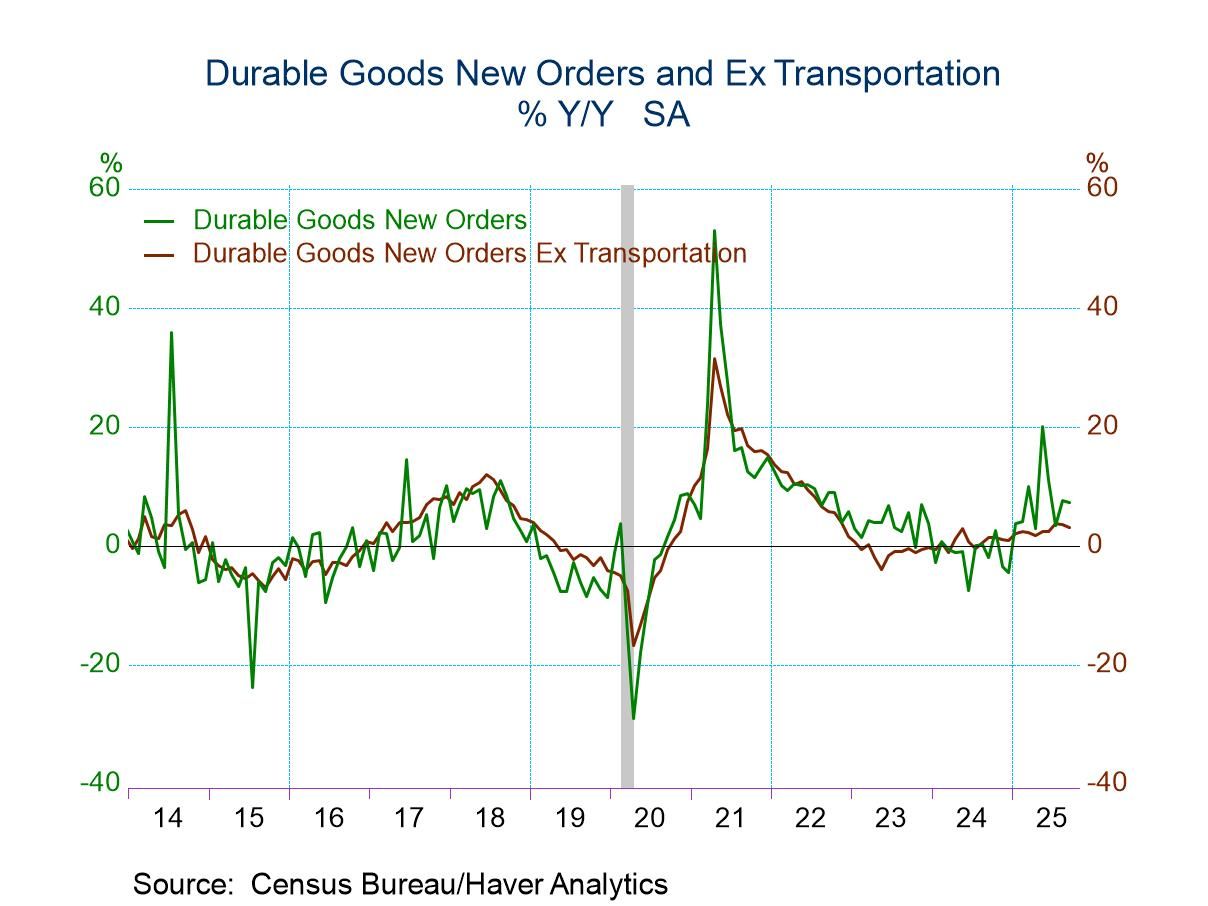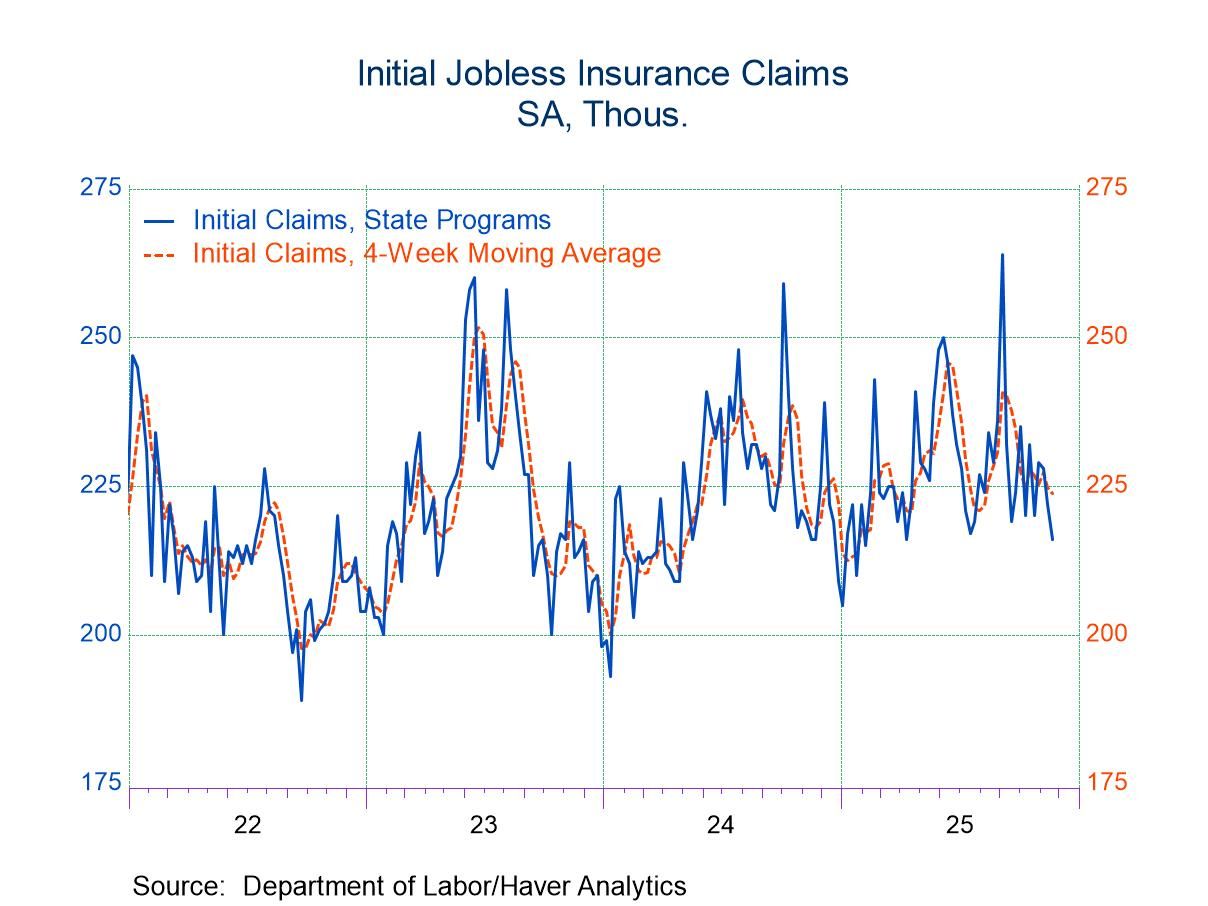Texas Manufacturing Activity Index Turns Positive in July; Expectations Strengthen
by:Tom Moeller
|in:Economy in Brief
Summary
- Survey turns positive for first time in six months.
- Production, employment & hours-worked readings improve.
- Prices and wages & benefits indicators weaken.
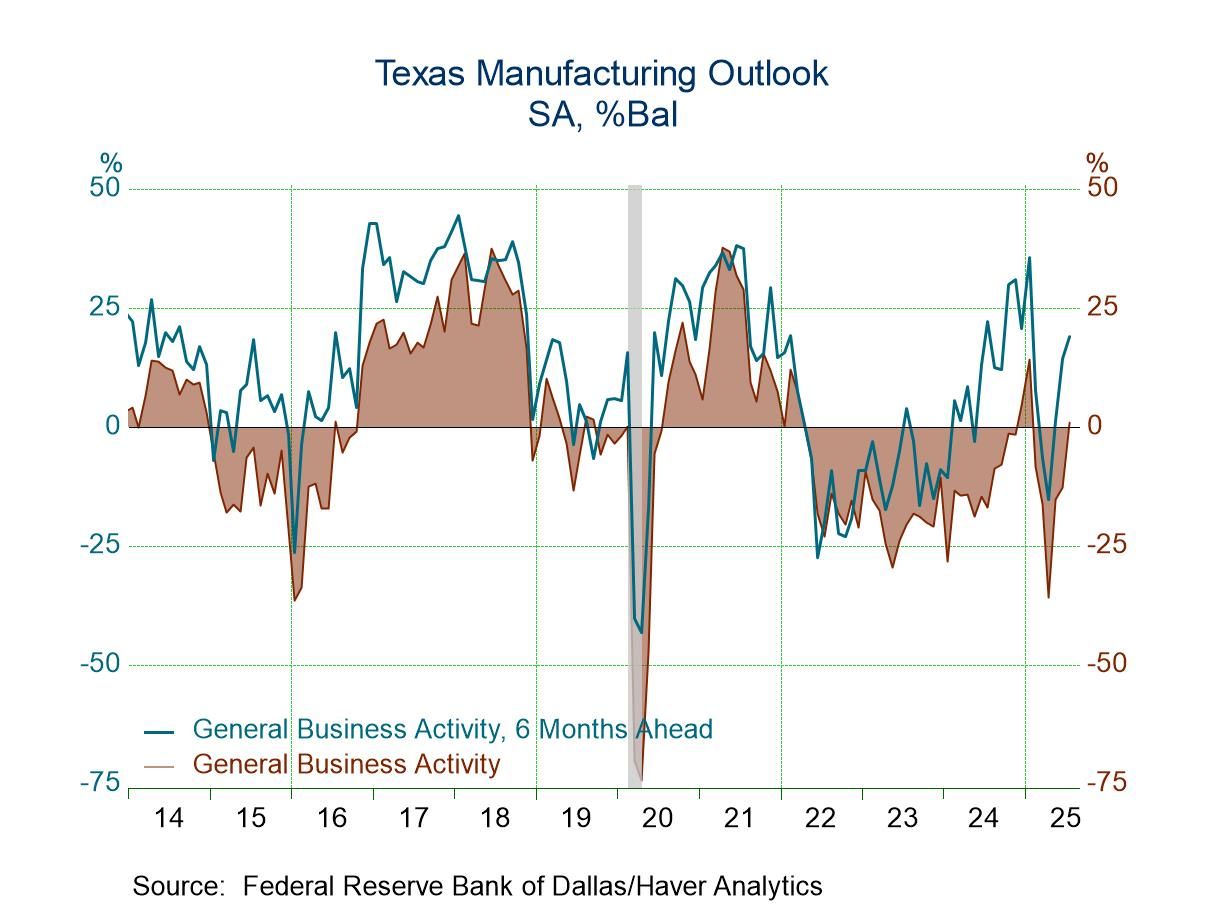
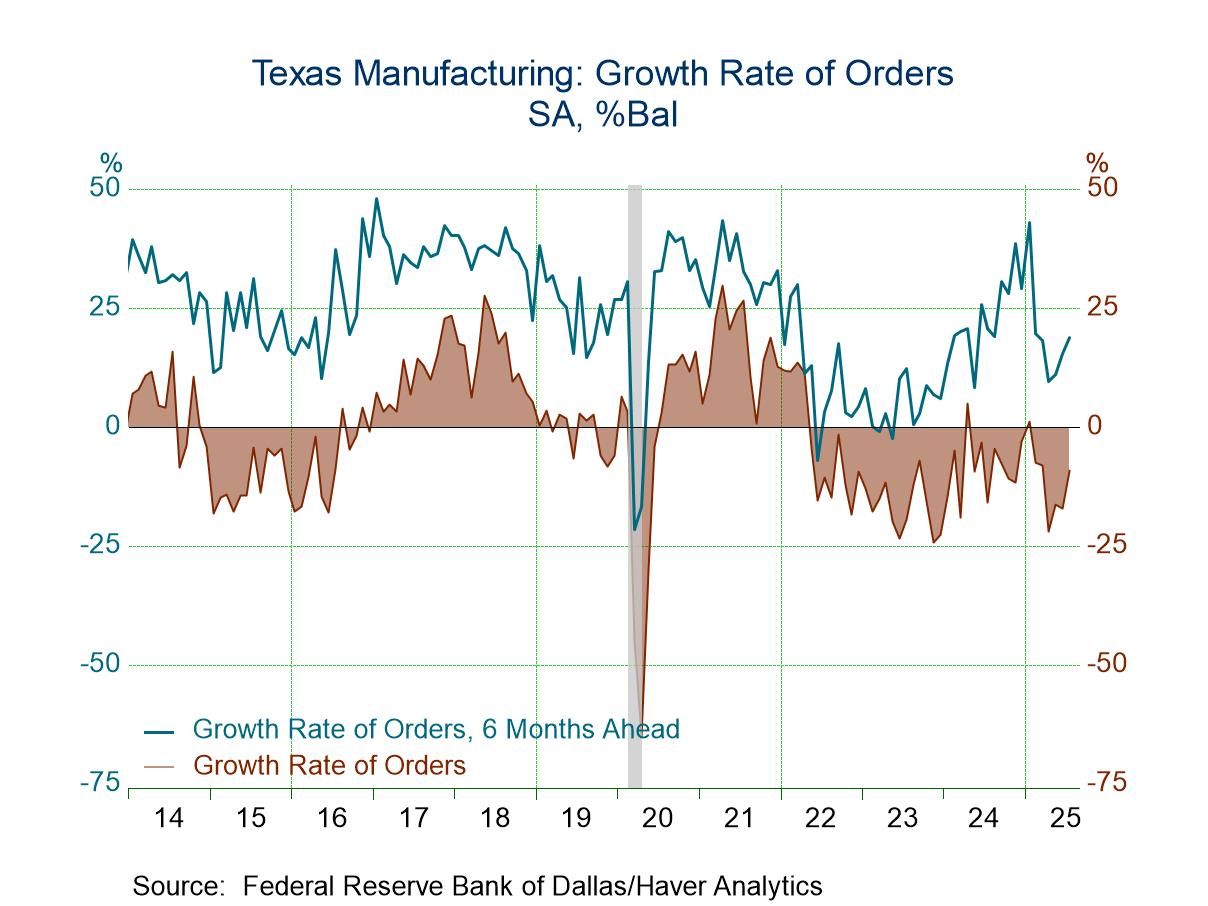
Texas manufacturing sector activity improved in July, according to the Texas Manufacturing Outlook Survey conducted by the Federal Reserve Bank of Dallas. The General Business Activity index rose to 0.9% this month from -12.7% in June, but remained below a high of +14.1 in January. A higher 22.1% of respondents reported improved business activity in July. The Future Business Activity index strengthened to 19.0 this month to its highest level since January. The data were collected from July 15 to 23 from 81 manufacturing firms.
The production index strengthened to 21.3 from 1.3 in June and stood at the highest level since December 2021. A higher 35.2% of respondents reported increasing production. The employment index rose in July to 8.4, its best reading since September 2023 as 17.4% of respondents reported higher employment for the month. The hours worked measure surged to 7.7 from -8.4. The capital expenditures index remained positive at 6.8 after surging to 10.9 in June. The shipments reading increased to 2.7 after falling to -7.3 in June. The growth rate of new orders index rose to -9.1 from -17.2; it has not been positive since January.
Inflation indicators weakened this month. The index for prices received for finished goods declined to 11.1 after rising to 26.1 in June. It was the lowest level since March. A lessened 15.8% of respondents reported raising prices this month while a higher 4.7% reported lowering prices. The index of prices paid for raw materials fell to 41.7 from 43.0, but remained up from a low of 1.0 in June 2023. The wages & benefits index eased to 13.2 this month after falling to 13.4 in June, and has been trending lower since a high of 50.6 in May 2022.
The rise in the Future Manufacturing Activity Index reflected a strengthening in expected new orders growth to 18.8 from 15.3 and expected production to 30.3 from 22.6. The future employment reading strengthened to 27.3, its highest level since January. The future wages & benefits reading rose to 37.2 after doubling to 32.1 in June. The future capital spending reading, however, eased to 15.5 and remained below its January high of 27.3.
Each index is calculated by subtracting the percentage reporting a decrease in activity from the percentage reporting an increase. When all firms report rising activity, an index will register 100. An index will register -100 when all firms report a decrease. An index will be zero when the number of firms reporting an increase equals the number reporting a decrease. Data for the Texas Manufacturing Outlook, conducted by the Federal Reserve Bank of Dallas, can be found in Haver's SURVEYS database.
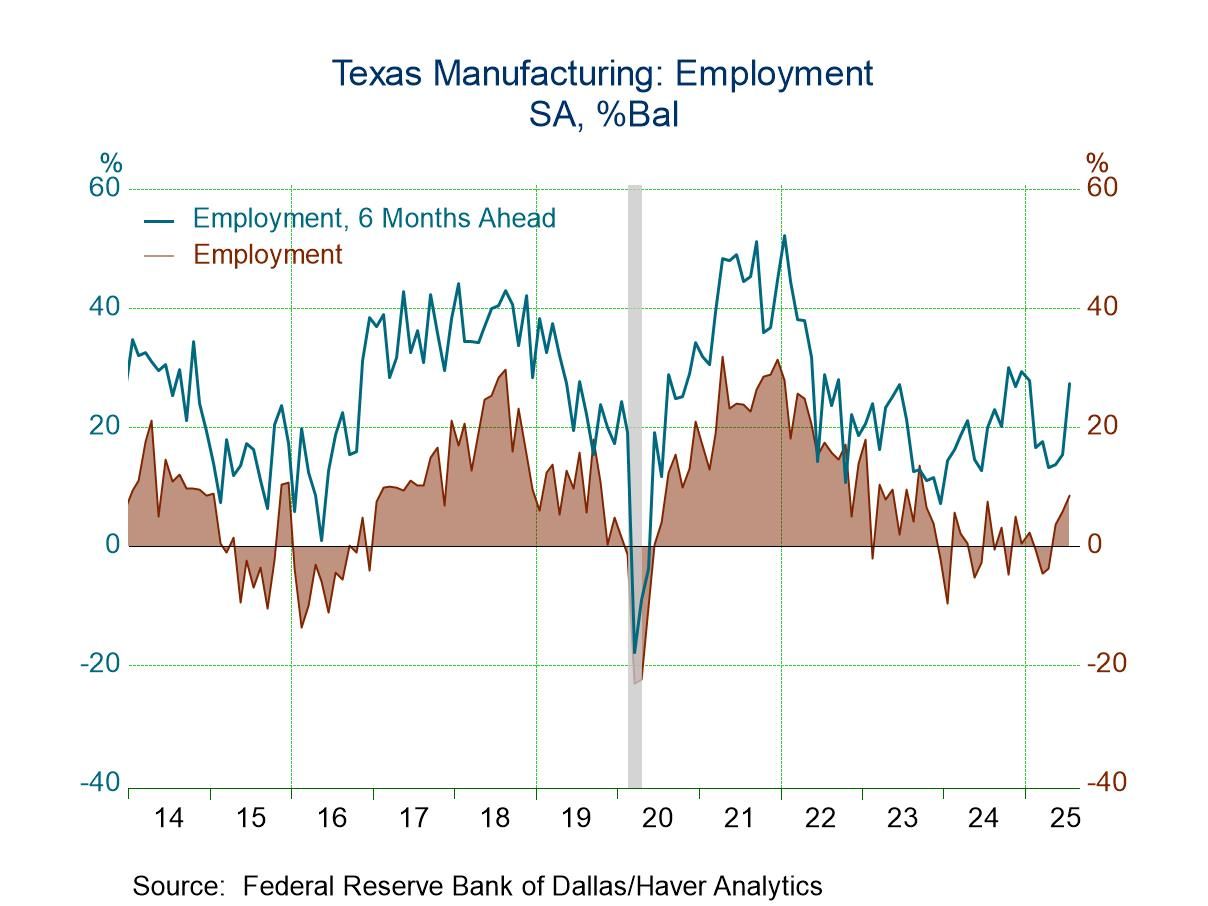

Tom Moeller
AuthorMore in Author Profile »Prior to joining Haver Analytics in 2000, Mr. Moeller worked as the Economist at Chancellor Capital Management from 1985 to 1999. There, he developed comprehensive economic forecasts and interpreted economic data for equity and fixed income portfolio managers. Also at Chancellor, Mr. Moeller worked as an equity analyst and was responsible for researching and rating companies in the economically sensitive automobile and housing industries for investment in Chancellor’s equity portfolio. Prior to joining Chancellor, Mr. Moeller was an Economist at Citibank from 1979 to 1984. He also analyzed pricing behavior in the metals industry for the Council on Wage and Price Stability in Washington, D.C. In 1999, Mr. Moeller received the award for most accurate forecast from the Forecasters' Club of New York. From 1990 to 1992 he was President of the New York Association for Business Economists. Mr. Moeller earned an M.B.A. in Finance from Fordham University, where he graduated in 1987. He holds a Bachelor of Arts in Economics from George Washington University.



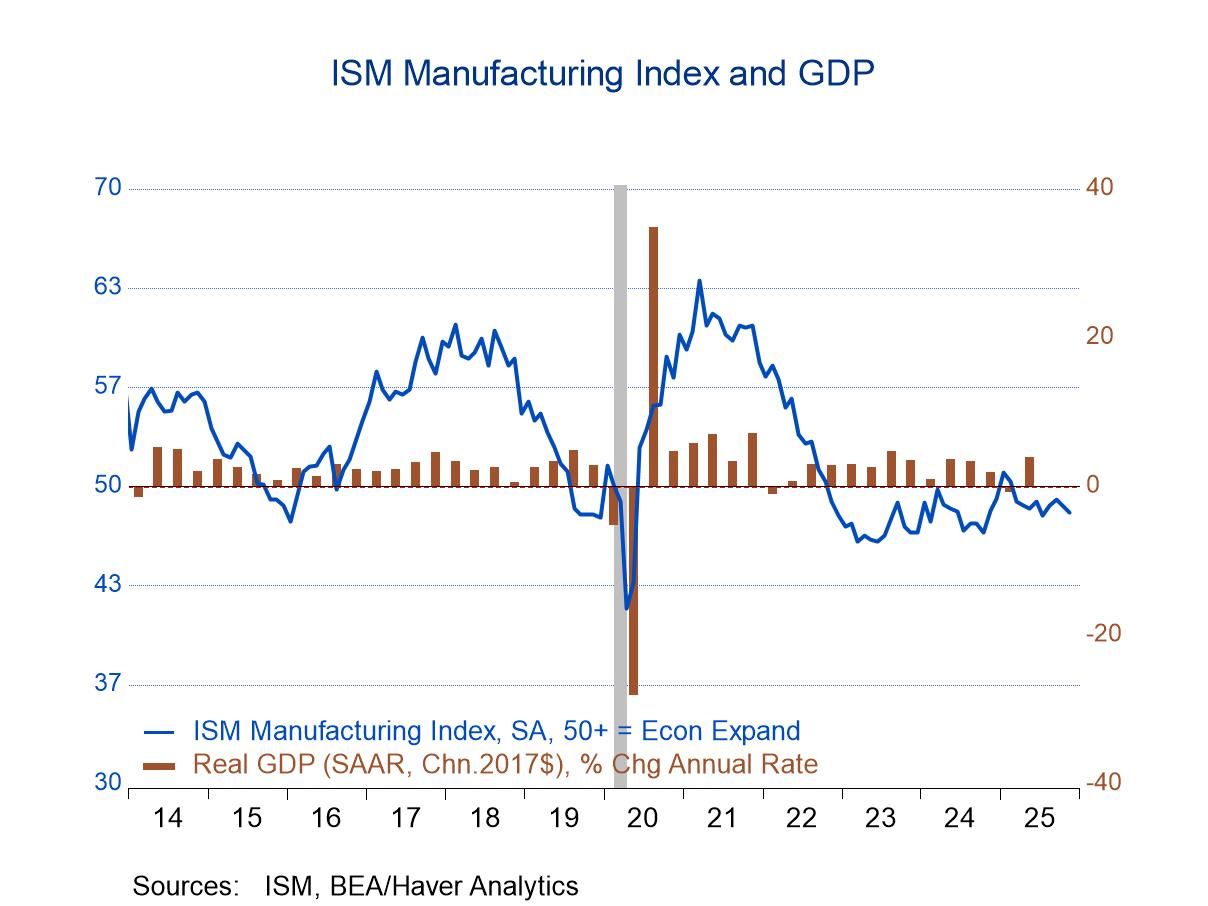
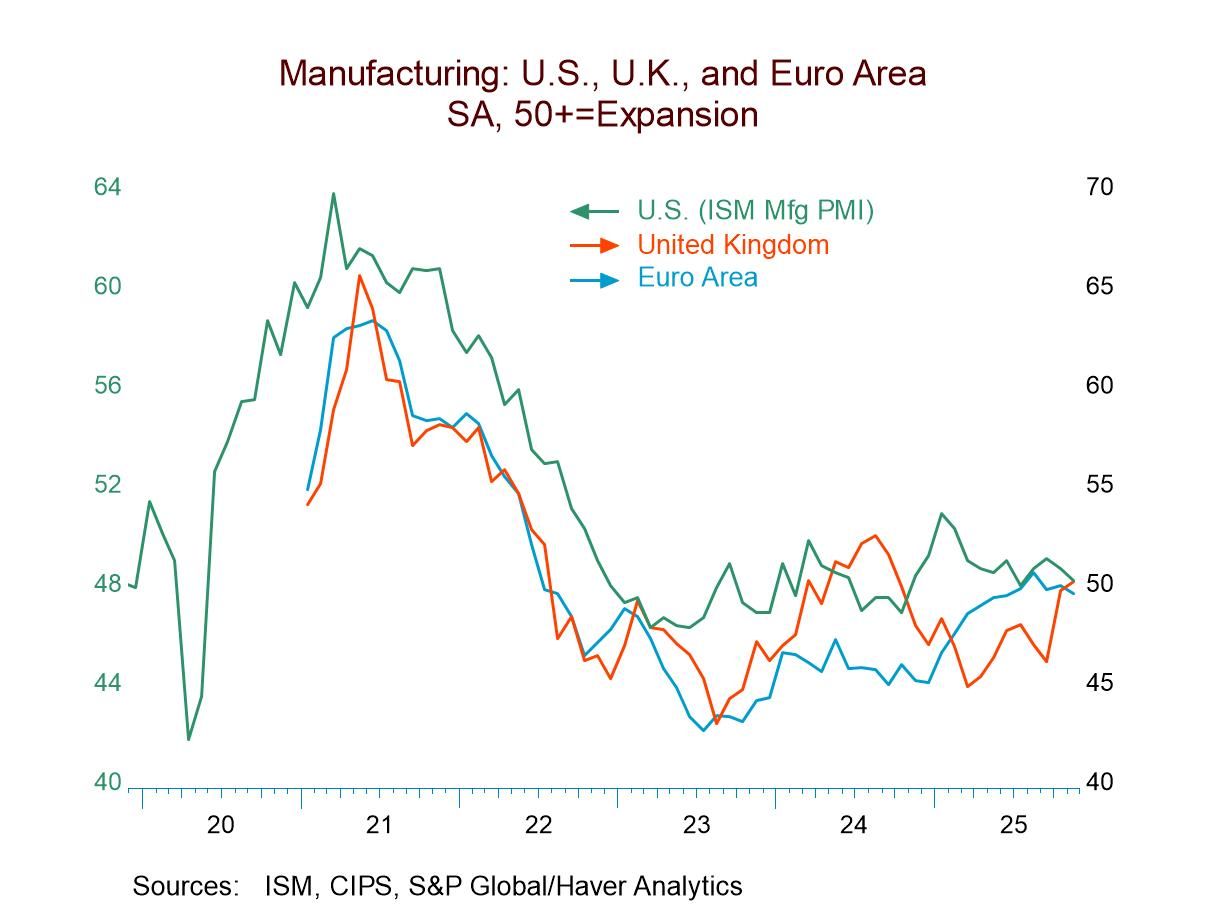
 Global
Global